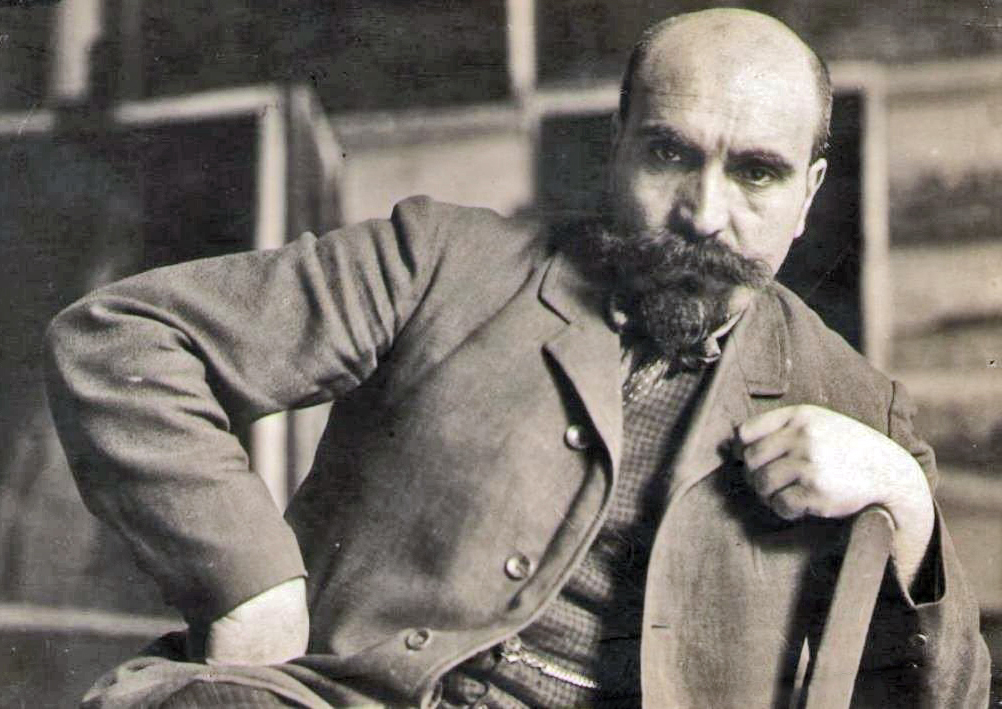PANOS TERLEMEZIAN (1865–1941)
Carpet weaving, 1913
PANOS TERLEMEZIAN (1865–1941)
Carpet weaving, 1913
Oil on canvas. Signed,located and dated on the left.

What a tumultuous and committed life Panos Terlémézian had!
He was born in 1865 to a peasant family in Van, Turkey, and began to paint the landscapes around him at the age of twelve.
Most of his school education was at the Getronagan School in Van.
As a young student, he took part in the national liberation movement of Western Armenia, which fought against the oppressive regime of Sultan Abdülhamid II.
A warrant was issued for his arrest in 1894. Fleeing to Tiflis, which would later become Tbilisi, the capital of Georgia, he found out that he had been sentenced to prison in absentia. He then went to Saint Petersburg where from 1895 to 1897 he studied at the Academy of Fine Arts.
He was deported to Iran at the request of the Turkish government, but he managed to flee to Paris where he arrived in 1899. There, with some respite he had the opportunity to attend the Académie Julian where he studied with Jean Paul Laurens (1838–1921) and the Orientalist painter François Jean Baptiste Benjamin Constant (1845–1902).
He then painted a series of landscapes on that subject and made frequent trips to the Caucasus countries.
In 1904 at an exhibition in Munich dedicated to European painters, he was awarded the Gold Medal for “The Narthex of the Sanahin Monastery” which he completed on one of his trips. His nostalgia for the country drew him back to Istanbul in 1910, where he founded a school of painting.
At that time he mixed with a group of intellectuals which included the priest musicologist, poet, author and composer Komitas (1869-1935) born in Kutahya, the poet Taniel Varujan (1884–1915) from Sivas in Turkey, Adom Yarjanian (1878–1915) who was also a poet, better known by his pseudonym, Siamanto, a native of Erzincan in Turkey, and the satirical journalist Yervant Odian (1869–1926).
He stayed in Istanbul for two years, but his memories brought him back to his hometown of Van, so near by, which he finally found again in 1913 after fifteen years away.
He painted landscapes from his childhood such as “Gdouts Island on Van Lake.”
But tragedy caught up with him again in 1915. He took part when his city defended itself against Turkish troops, but finally had to flee Anatolia and take refuge in Tbilisi. He then joined the Union of Armenian Artists led by Yeghishe Tatossian. Later, in 1917, a branch of this Union was founded in Rostov.
He then travelled to France and Italy where he perfected his landscape technique. He went to the United States in 1923 where he painted natural scenery around Fresno, California, the Pacific Ocean, and even the Niagara Falls at various times of the day.
He returned to his native land in 1928 and settled in Yerevan, the capital of present-day Armenia.
He took up his brushes again and perfectly portrayed the harsh and austere character of the Armenian landscape. “Tatev Monastery,” “Mount Ararat,” “The shore and island of Lake Sevan,” “The Aragats mountain range” demonstrate his natural sensitivity free of any artifice. The path his life took was undoubtedly testimony to that.
His paintings can now be viewed in several museums in Armenia, the country which immortalised the man and his work by giving his name to the Academy of Fine Arts of Yerevan upon his death in 1941.
Frédéric Fringhian
